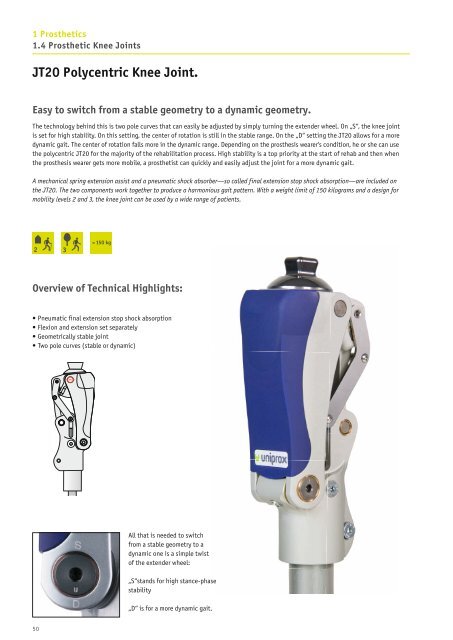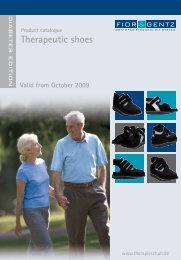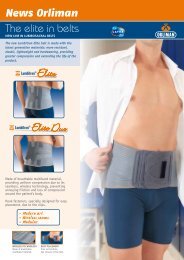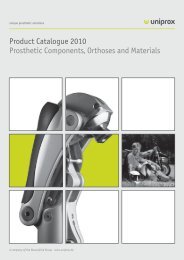NEW - Orto Finland
NEW - Orto Finland
NEW - Orto Finland
You also want an ePaper? Increase the reach of your titles
YUMPU automatically turns print PDFs into web optimized ePapers that Google loves.
1 Prosthetics<br />
1.4 Prosthetic Knee Joints<br />
JT20 Polycentric Knee Joint.<br />
Easy to switch from a stable geometry to a dynamic geometry.<br />
The technology behind this is two pole curves that can easily be adjusted by simply turning the extender wheel. On „S“, the knee joint<br />
is set for high stability. On this setting, the center of rotation is still in the stable range. On the „D“ setting the JT20 allows for a more<br />
dynamic gait. The center of rotation falls more in the dynamic range. Depending on the prosthesis wearer‘s condition, he or she can use<br />
the polycentric JT20 for the majority of the rehabilitation process. High stability is a top priority at the start of rehab and then when<br />
the prosthesis wearer gets more mobile, a prosthetist can quickly and easily adjust the joint for a more dynamic gait.<br />
A mechanical spring extension assist and a pneumatic shock absorber—so called final extension stop shock absorption—are included on<br />
the JT20. The two components work together to produce a harmonious gait pattern. With a weight limit of 150 kilograms and a design for<br />
mobility levels 2 and 3, the knee joint can be used by a wide range of patients.<br />
Overview of Technical Highlights:<br />
• Pneumatic final extension stop shock absorption<br />
• Flexion and extension set separately<br />
• Geometrically stable joint<br />
• Two pole curves (stable or dynamic)<br />
50<br />
All that is needed to switch<br />
from a stable geometry to a<br />
dynamic one is a simple twist<br />
of the extender wheel:<br />
„S“stands for high stance-phase<br />
stability<br />
„D“ is for a more dynamic gait.









